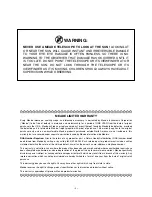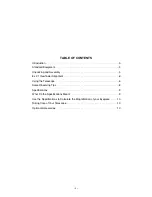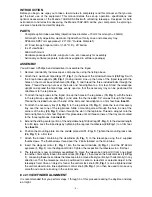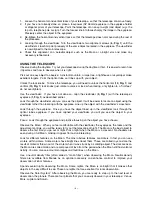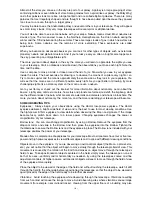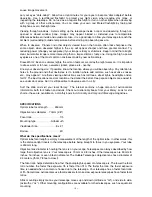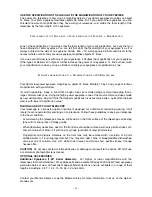
– 8 –
Almost all the stars you can see in the sky are part of our galaxy. A galaxy is a large grouping of stars,
containing millions or even billions of stars. Some galaxies form a spiral (like our galaxy, the Milky Way)
and other galaxies look more like a large football and are called elliptical galaxies. There are many
galaxies that are irregularly shaped and are thought to have been pulled apart because they passed
too close to—or even through—a larger galaxy.
You may be able to see the Andromeda galaxy and several others in your telescope. They will appear
as small, fuzzy clouds. Only very large telescopes will reveal spiral or elliptical details.
You will also be able to see some nebulas with your scope. Nebula means cloud. Most nebulas are
clouds of gas. The two easiest to see in the Northern Hemisphere are the Orion nebula during the
winter and the Trifid nebula during the summer. These are large clouds of gas in which new stars are
being born. Some nebulas are the remains of stars exploding. These explosions are called
supernovas.
When you become an advanced observer you can look for other types of objects such as asteroids,
planetary nebula and globular clusters. And if you’re lucky, every so often a bright comet appears in
the sky, presenting an unforgettable sight.
The more you learn about objects in the sky, the more you will learn to appreciate the sights you see
in your telescope. Start a notebook and write down the observations you make each night. Note the
time and the date.
Use a compass to make a circle, or trace around the lid of a jar. Draw what you see in your eyepiece
inside the circle. The best exercise for drawing is to observe the moons of Jupiter every night or so.
Try to make Jupiter and the moons approximately the same size as they look in your eyepiece. You
will see that the moons are in a different position every night. As you get better at drawing, try more
challenging sights, like a crater system on the moon or even a nebula.
Go to your library or check out the internet for more information about astronomy. Learn about the
basics: Light years, orbits, star colors, how stars and planets are formed, red shift, the big bang, what
are the different kinds of nebula, what are comets, asteroids and meteors and what is a black hole. The
more you learn about astronomy, the more fun, and the more rewarding your telescope will become.
SOME OBSERVING TIPS
Eyepieces: Always begin your observations using the 26mm low-power eyepiece. The 26mm
eyepiece delivers a bright, wide field of view and is the best to use for most viewing conditions. Use
the high-power 9.7mm eyepiece to view details when observing the Moon and planets. If the image
become fuzzy, switch back down to a lower power. Changing eyepieces changes the power or
magnification of your telescope.
Barlow lens: You can also change magnification by using a Barlow. Remove the eyepiece from the
diagonal mirror and slide in the Barlow. And then place the eyepiece into the Barlow. Tighten the
thumbscrews to secure the Barlow lens and the eyepiece in place. The Barlow lens included with your
telescope doubles the power of your telescope.
Meade offers a complete line of eyepieces for your telescope. Most astronomers have four or five low-
power and high power eyepieces to view different objects and to cope with different viewing conditions.
Objects move in the eyepiece: If you are observing an astronomical object (the Moon, a planet, star,
etc.) you will notice that the object will begin to move slowly through the telescopic field of view. This
movement is caused by the rotation of the Earth and makes an object move through the telescope’s
field of view. To keep astronomical objects centered in the field, simply move the telescope on one or
both of its axes—vertically and/or horizontally as needed—try using the telescopes coarse and fine
adjustment controls. At higher powers, astronomical objects will seem to move through the field of view
of the eyepiece more rapidly.
Place the object to be viewed at the edge of the field and, without touching the telescope, watch it drift
through the field to the other side before repositioning the telescope so that the object to be viewed is
again placed at the edge of the field, ready to be further observed.
Vibrations: Avoid touching the eyepiece while observing through the telescope. Vibrations resulting
from such contact will cause the image to move. Avoid observing sites where vibrations cause image
movement (for example, near railroad tracks). Viewing from the upper floors of a building may also
Summary of Contents for 70AZ-ADS
Page 11: ...11...


